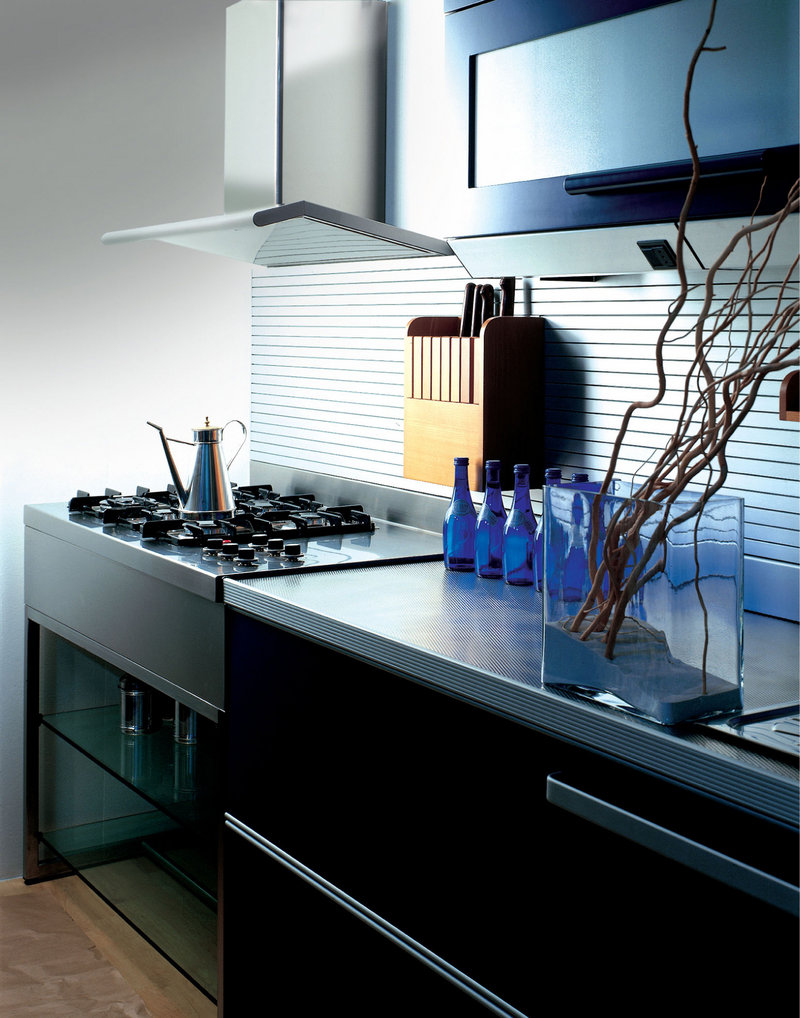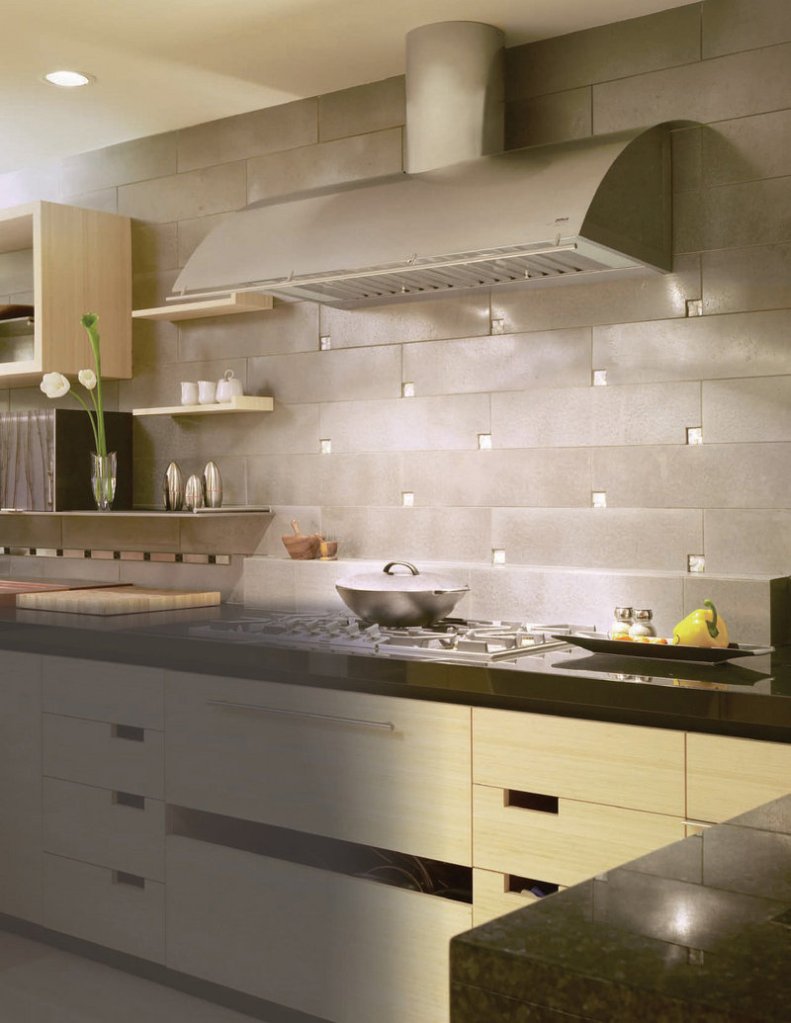Above every stove or cooktop hangs an opportunity to express yourself.
No more are we stuck with a boring, bulgy box that howls from a space beneath the spice cabinet.
Now that the kitchen is one of the most popular places to gather, range hoods are evolving and competing to be a focal point.
They are floating elegantly above a voluptuous kitchen island and commanding attention from a wall.
Make the right choices, and you can have a sleek new kitchen ventilation system that has power and a purr — for an investment starting at about $400, plus installation.
It would be easy to spend a lot more. Prices for custom and high-end decorative hoods can quickly climb to thousands of dollars.
Homeowners are turning on to the trend. From the artsy to designs with attitude, decorative range hoods are turning up in settings from contemporary to traditional.
“If you’re doing a traditional home, there’s no reason you couldn’t use a more decorative hood,” said Lora Donoghue, past president of the National Kitchen and Bath Association.
Form over function? Not necessarily. Range hoods are more powerful than ever, with blowers moving air at rates from about 400 to 1,300 cubic feet per minute or more. Check online consumer reviews to avoid noisemakers.
The might and muscle is important these days. Ranges in many homes are big, sometimes six to eight burners.
That’s a lot of territory for a range hood to cover to remove the grease and steam bubbling up from the pots and pans.
“If it isn’t leaving the house, (the greasy steam) is on — guess what: beautiful new cabinets, carpeting, upholstery, walls, pictures and you,” says Jan Byers, manager of the Sub-Zero/Wolf showroom in Charlotte, N.C.
Many homeowners still prefer traditional decor. About 70 percent of customers want a traditional look when they come to Ferguson Bath, Kitchen & Lighting Gallery in Charlotte. A custom hood built by a cabinet maker is often their choice.
A hood can be built to match the cabinets — and the size of the range.
“Basically if you can draw it on a CAD (computer-aided design) program, they can make it,” said Liz Gant, Ferguson’s appliance manager.
A custom hood will need a liner and an insert, which includes all of the innards that do the dirty work.
A decorative range hood is a second option. The single unit combines a hood and insert. These often have a more contemporary look.
Lighting is usually built into a ventilation system. Halogen, florescent and LED fixtures are common.
While design is important, customers want a model that works well above all. That means power without the howl.
“The No. 1 concern is consumers want something quiet,” Gant said.
Send questions/comments to the editors.




Success. Please wait for the page to reload. If the page does not reload within 5 seconds, please refresh the page.
Enter your email and password to access comments.
Hi, to comment on stories you must . This profile is in addition to your subscription and website login.
Already have a commenting profile? .
Invalid username/password.
Please check your email to confirm and complete your registration.
Only subscribers are eligible to post comments. Please subscribe or login first for digital access. Here’s why.
Use the form below to reset your password. When you've submitted your account email, we will send an email with a reset code.